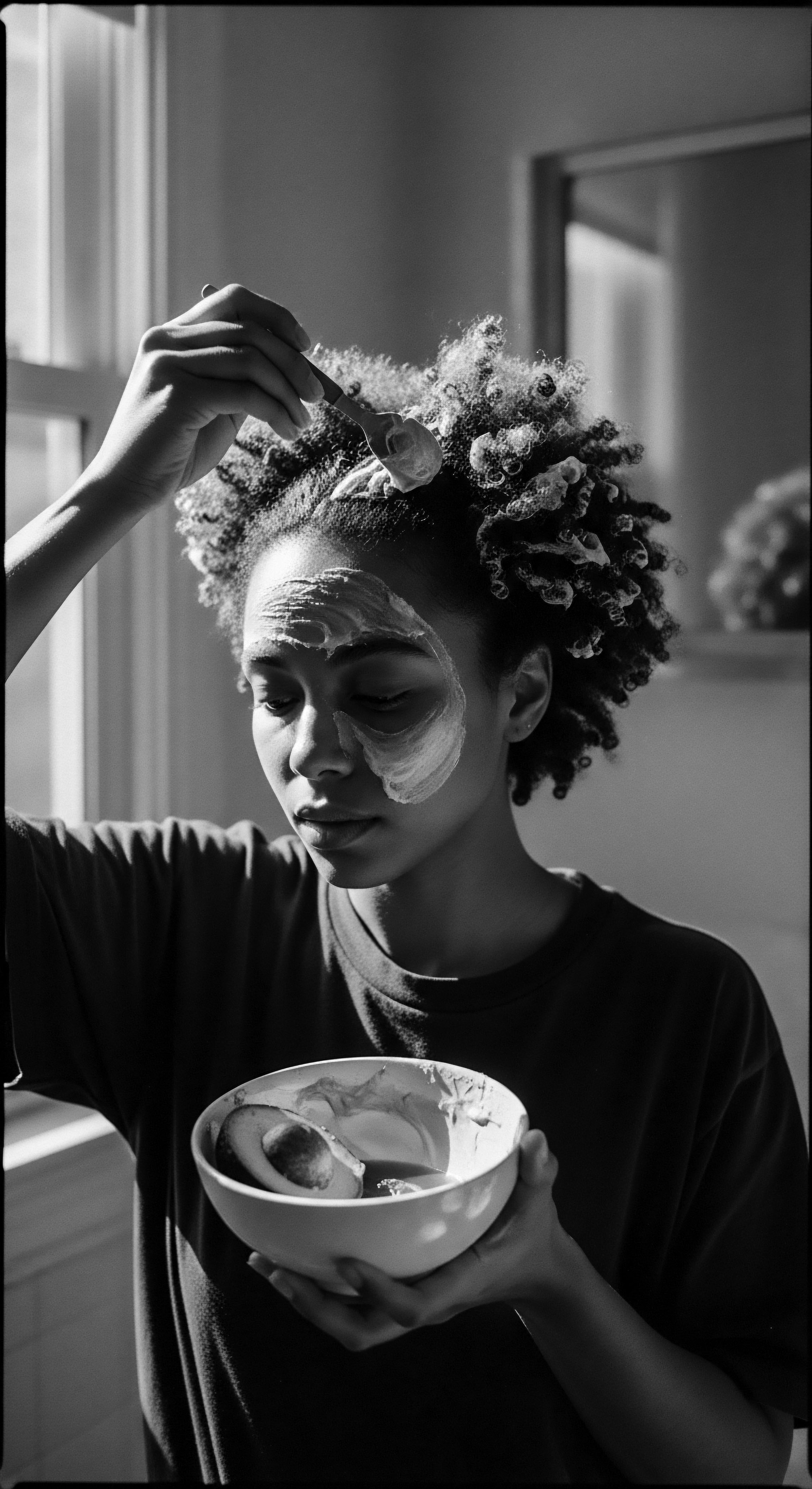
Fundamentals
The concept of “Sleep Damage,” when viewed through the lens of textured hair heritage, serves as a crucial recognition of the subtle yet persistent wear and tear inflicted upon hair during hours of rest. At its most elemental, Sleep Damage refers to the physical stress and loss of vital moisture that hair strands experience through friction and absorption against sleeping surfaces. This phenomenon, often underestimated in its cumulative impact, manifests as increased dryness, undesirable frizz, troublesome tangles, and, ultimately, significant breakage of hair fibers.
For individuals with textured hair, particularly those within Black and mixed-race communities, the unique architecture of their coils and curls renders them particularly susceptible to these nocturnal aggressors. The natural spirals and bends in textured hair provide more points of contact for friction against abrasive fabrics, and its inherent tendency towards dryness means any moisture depletion is acutely felt, accelerating vulnerability.
Consider a strand of hair as a delicate thread, each one a testament to ancestral lineage and personal story. When this strand, especially one with a beautifully complex coil pattern, encounters the rough, absorbent terrain of a typical cotton pillowcase, a quiet battle begins. The friction can disrupt the hair’s outermost layer, the cuticle, causing it to lift or fray, rather like scales on a fish. Concurrently, cotton’s thirsty nature acts as a wick, drawing away the hair’s natural oils and applied moisturizers, leaving it parched and brittle.
This daily nightly skirmish, if left unaddressed, can steadily diminish the hair’s vitality and resilience, leading to chronic issues that impede length retention and overall hair wellness. The fundamental understanding of Sleep Damage, therefore, guides a conscious return to protective practices, mirroring ancient wisdom for contemporary needs.
Sleep Damage describes the physical stress and moisture depletion textured hair endures during rest, exacerbated by friction and absorbent fabrics.
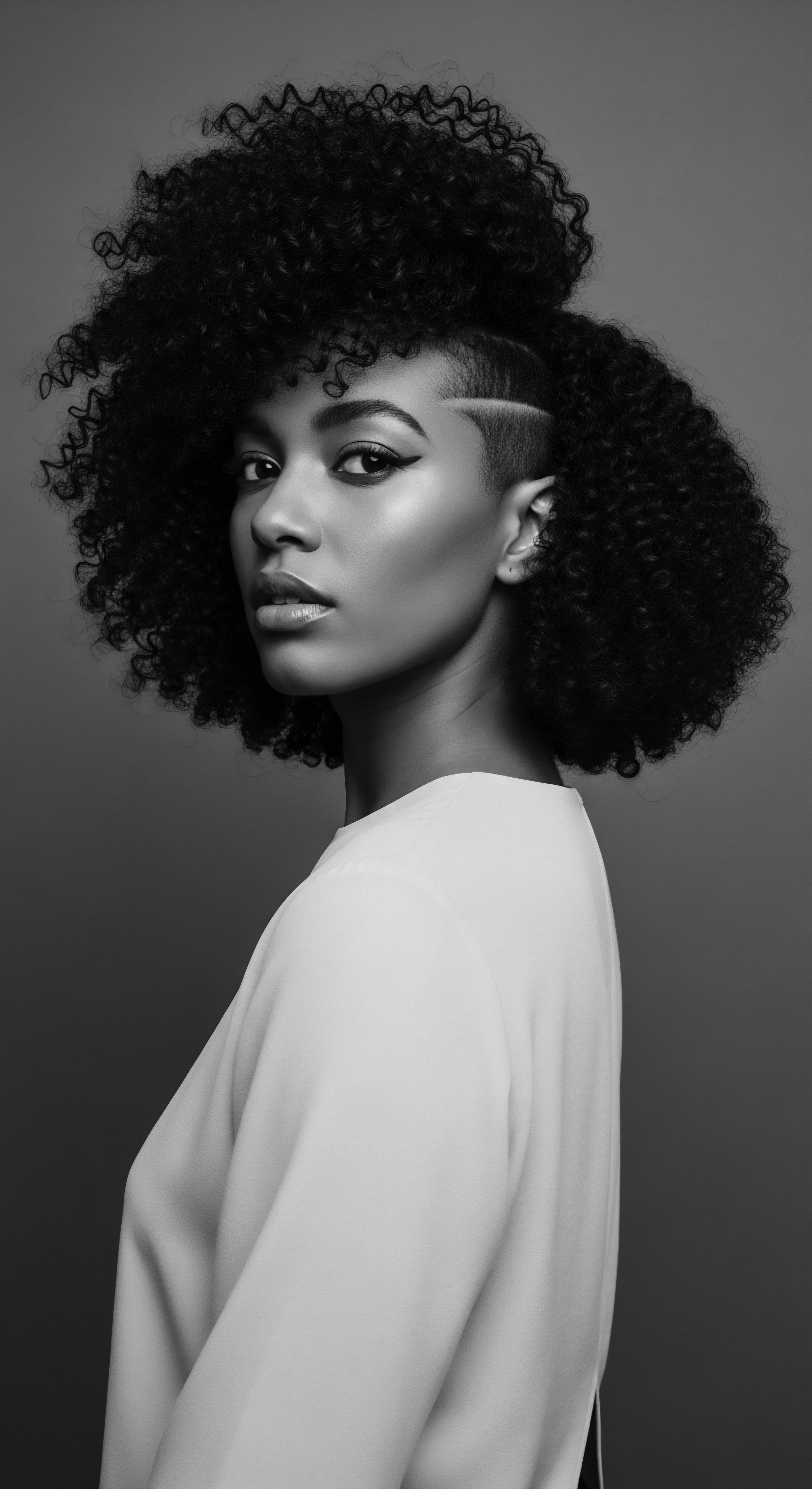
Understanding the Mechanics of Nocturnal Hair Stress
The mechanics of Sleep Damage unfold on a microscopic level, impacting the hair’s delicate structure over time. The hair cuticle, composed of overlapping cells resembling shingles on a roof, provides the first line of defense against environmental harm. When hair rubs against coarse materials, these cuticular scales can abrade, lift, and even chip away. This exposure of the inner cortex renders the hair vulnerable to moisture loss, environmental pollutants, and mechanical strain.
Moreover, the constant compression and twisting of hair during sleep can cause tangles to form, which, upon waking, often necessitate aggressive detangling, further contributing to breakage and a diminished hair shaft. The cumulative effect of these seemingly minor nightly aggressions can be profound, undermining years of diligent care and protective styling.
Beyond the physical abrasion, the hygroscopic nature of many common bedding materials presents another significant challenge. Fabrics such as conventional cotton possess an inherent capacity to absorb moisture from their surroundings, including the precious hydration within our hair. This moisture extraction can leave textured strands feeling dry and rough, particularly problematic for hair types that naturally struggle with moisture retention due to their coily structure.
The scientific meaning of this process highlights a direct correlation between the sleeping environment and the hair’s susceptibility to dryness and subsequent fragility. Ancestral practices, as we will explore, intuitively understood these principles, long before the advent of microscopes or molecular biology, by choosing materials and methods that honored the hair’s need for protection and moisture.
- Friction Abrasion ❉ The rubbing of hair against harsh surfaces during sleep causes the hair’s outer cuticle layer to fray, leading to rough textures and compromised integrity.
- Moisture Depletion ❉ Absorbent fabrics, notably cotton, draw essential hydration from hair strands, leaving them dehydrated and prone to breakage.
- Stylistic Distortion ❉ Unprotected movement during sleep can undo intricate hairstyles, leading to tangles and the need for excessive restyling, which induces further stress.
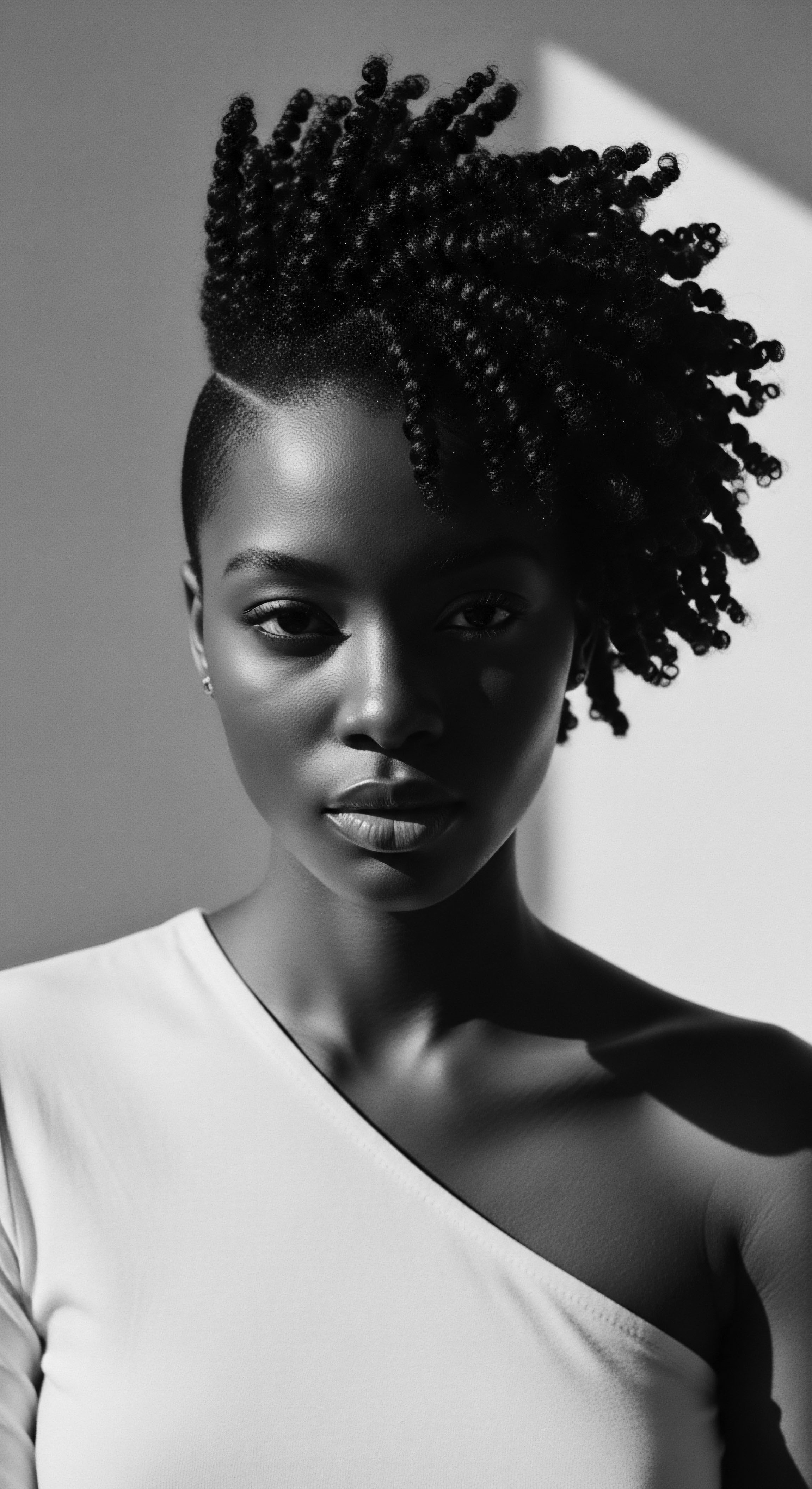
Intermediate
Expanding upon the fundamental recognition, the intermediate understanding of Sleep Damage delves deeper into its specific ramifications for textured hair, revealing the profound historical context of protective nighttime rituals. This concept addresses how the seemingly innocuous act of slumber can profoundly impact the structural integrity, moisture balance, and overall appearance of hair, particularly for hair types characterized by their unique curl patterns. The friction generated by tossing and turning against conventional pillowcases, often crafted from cotton, creates an environment where the hair’s delicate cuticles are abraded.
This mechanical stress can lift the outer layer of the hair shaft, inviting moisture loss and increasing susceptibility to breakage. The problem is not merely an aesthetic inconvenience; it strikes at the very resilience of textured strands.
Consider, too, the inherent thirst of textured hair. Its spiraled nature means natural oils from the scalp have a more arduous journey traveling down the hair shaft, leaving the ends often drier. When this already delicate balance meets a highly absorbent material like cotton, the natural oils and applied emollients are wicked away, leaving hair feeling parched and brittle upon waking.
This sustained nightly dehydration can contribute significantly to chronic dryness and stunted growth over time. Therefore, the meaning of Sleep Damage here extends to a continuous challenge of maintaining optimal hydration and preventing mechanical stress, a challenge that has shaped hair care practices across generations and geographies.
Sleep Damage, for textured hair, reflects a continuous challenge of maintaining hydration and preventing mechanical stress from nightly friction against absorbent fabrics.
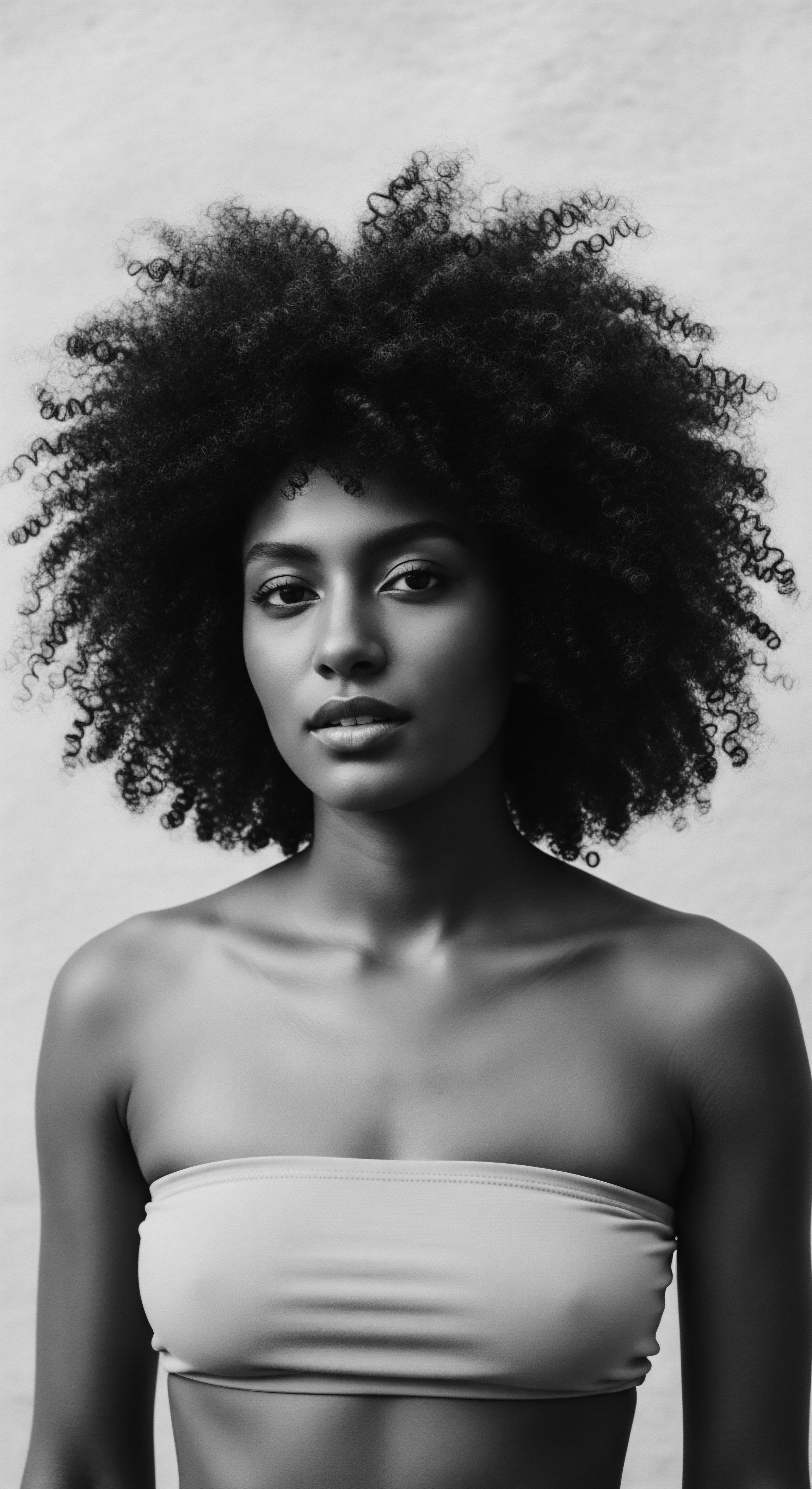
Ancestral Solutions to Nocturnal Hair Needs
The wisdom of ancestors, particularly within African and diasporic communities, long recognized the importance of safeguarding hair during sleep, predating modern scientific validation of Sleep Damage. This recognition translated into a diverse array of practices and tools designed to mitigate environmental harm and preserve intricate hairstyles. The use of headwraps, often crafted from various materials, stands as a prominent example of this foresight. From the earliest days of documented African history, head coverings, known by various names such as Dukus in Ghana, Geles in Nigeria, or Doeks in South Africa, served not only as symbols of status, marital standing, or spiritual reverence but also as practical means of protecting hair from dust, sun, and other elements, including during sleep.
During the transatlantic slave trade, and in the eras that followed, the protective function of head coverings took on an even more critical role for Black women in the Americas. Stripped of traditional grooming tools and practices, and often subjected to harsh labor conditions that left little time or resources for elaborate hair care, head bonnets fashioned from available scraps of fabric, handkerchiefs, or cotton rags became an essential solution. These coverings were a pragmatic response to preserving natural textures and preventing tangles and frizz, allowing women to maintain styles for longer periods, thereby reducing the need for frequent manipulation which could lead to further damage.
Beyond the bonnets, the practice of intricate braiding and styling before sleep was another ancestral strategy. Styles such as cornrows, twists, and various forms of threading (like African hair threading, known as Isi òwu or Irun Kiko in Yoruba) not only served as expressions of identity and artistry but also functioned as protective measures, keeping hair neatly contained and minimizing friction. Such styles, which could be maintained for weeks, intrinsically reduced daily manipulation and the nightly exposure of individual strands to abrasive surfaces. The deliberate wrapping or braiding of natural hair with threads, as in African hair threading, protected hair from breakage and fostered healthy growth, demonstrating a deep, practical understanding of hair preservation.
| Practice Headwraps (Dukus, Geles, Doeks) |
| Cultural Context / Origin Various African communities, widespread in diaspora. |
| Purpose in Mitigating Sleep Damage Provided a physical barrier against friction, retained moisture, and maintained elaborate styles. |
| Practice Hair Bonnets |
| Cultural Context / Origin African American communities, particularly during and post-slavery. |
| Purpose in Mitigating Sleep Damage Secured hair, preventing tangles, frizz, and preserving styles, adapting to challenging circumstances. |
| Practice Protective Braiding/Threading |
| Cultural Context / Origin Numerous African societies (e.g. Yoruba, Igbo). |
| Purpose in Mitigating Sleep Damage Kept hair contained, minimized individual strand exposure to friction, and promoted length retention. |
| Practice Wooden Headrests |
| Cultural Context / Origin Central, Western, and Southern African cultures, also ancient Egypt and Japan. |
| Purpose in Mitigating Sleep Damage Elevated the head to preserve complex coiffures for extended periods, avoiding direct hair contact with sleeping surfaces. |
| Practice These practices collectively underscore a long-standing, intuitive understanding of hair's vulnerability during sleep across diverse ancestral traditions. |
The resilience inherent in these practices is evident. Even when head coverings were weaponized during enslavement, mandated to distinguish Black women as lesser, they were reclaimed as a form of creative expression and cultural pride. This transformation of an oppressive tool into a symbol of defiance and self-expression speaks volumes about the enduring spirit of these communities.
The ancestral methods were not merely about preserving a hairstyle; they were about preserving identity, dignity, and a connection to cultural roots in the face of immense adversity. This deeper historical meaning enriches our contemporary understanding of Sleep Damage and the conscious choices we make for our hair today.
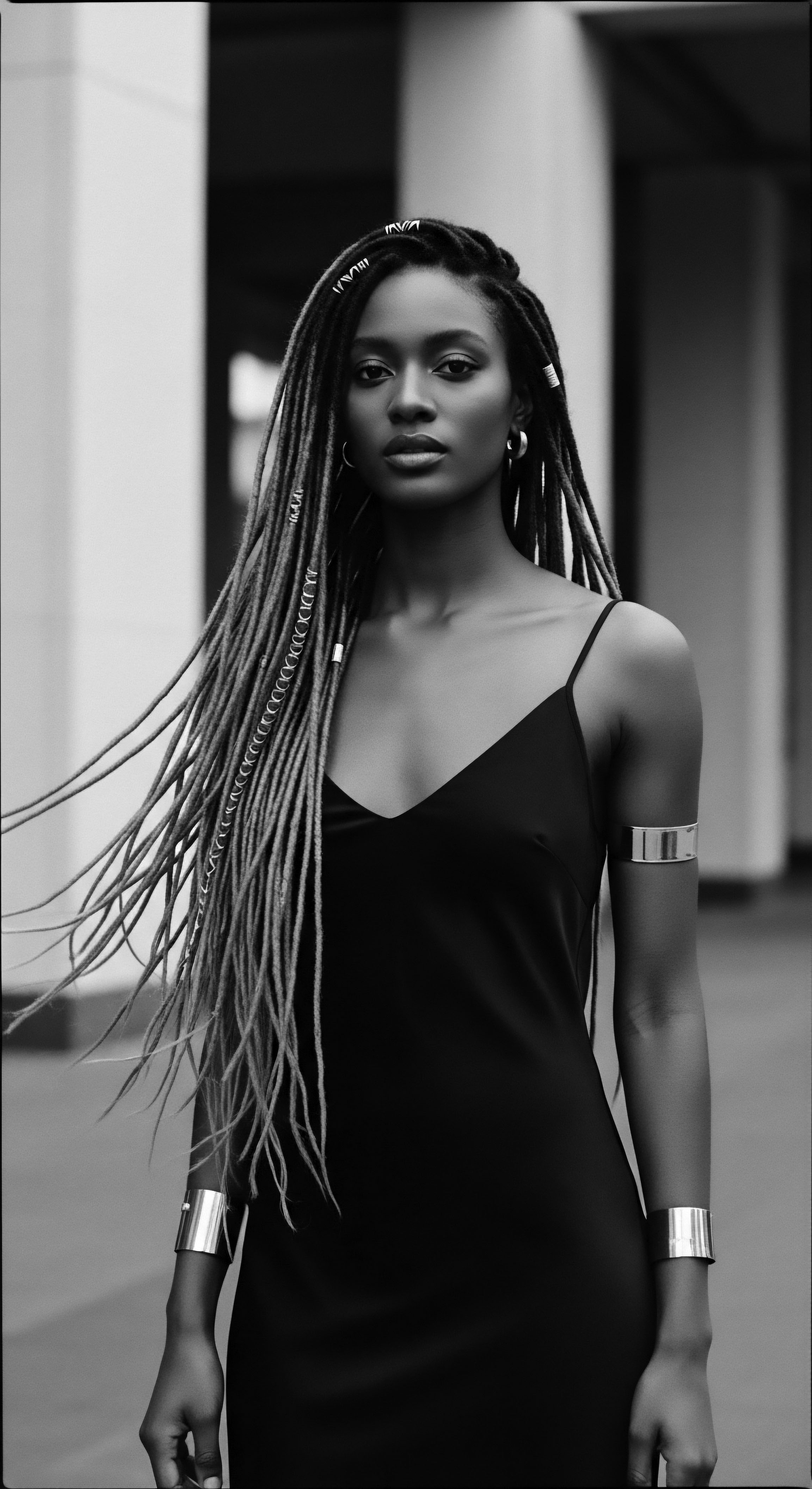
Academic
“Sleep Damage,” while not a formalized clinical diagnosis, stands as a profound descriptor within the lexicon of textured hair care, particularly for individuals whose lineage traces through Black and mixed-race communities. It precisely designates the cumulative mechanical and dehydrative stress incurred by hair during nocturnal repose, leading to a measurable compromise of its structural integrity and moisture equilibrium. This experiential term encompasses the physical attrition of the hair cuticle through incessant friction against abrasive sleeping surfaces, the depletion of inherent moisture due to the hygroscopic properties of certain bedding materials, and the structural disarray or degradation of complex hairstyles. The term’s recognition within heritage-based hair care practices underscores an ancestral wisdom that, through observation and sustained care, intuitively grasped principles now substantiated by modern trichology.
This practical understanding, honed over generations, speaks to how nocturnal conditions critically impact hair vitality, especially for high-porosity, coiled, or exceptionally delicate strands. The meaning extends beyond mere superficial concerns, delving into the continuous, vigilant efforts required to maintain hair integrity against environmental and mechanical challenges.
The scientific underpinning of Sleep Damage centers on the unique morphology of textured hair. Unlike straight hair, which has a relatively smooth, oval cross-section, coiled and curly strands possess an elliptical cross-section and often exhibit irregular distributions of disulfide bonds. These structural variances contribute to points of weakness along the hair shaft and an increased surface area, making textured hair inherently more prone to dryness and breakage. When hair is subjected to the repetitive rubbing motions against common pillowcases, particularly those made of cotton, the external cuticular layer—which serves as the primary protective sheath—experiences significant abrasion.
Cotton fibers, being microscopically rough and highly absorbent, act as a dual antagonist ❉ they generate friction that lifts and damages the cuticle scales and simultaneously draw away the hair’s natural sebum and applied moisturizers. This relentless moisture extraction exacerbates the hair’s natural dryness, leading to a vicious cycle of dehydration and increased fragility. The consequence is not only superficial frizz but also a significant reduction in hair elasticity and tensile strength, rendering it susceptible to fracturing under even minimal strain.
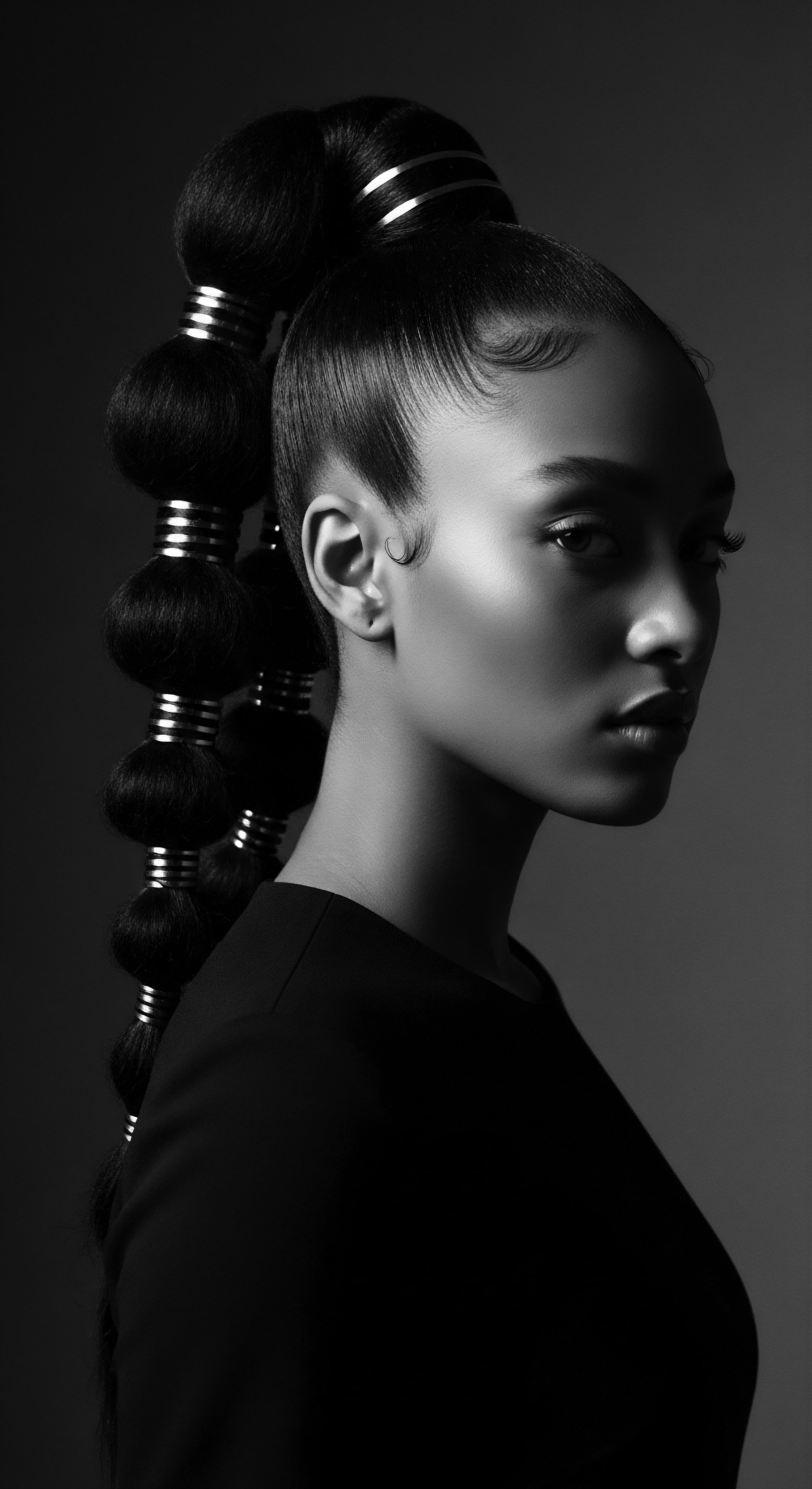
Historical Responses to Nocturnal Hair Vulnerability
Ancestral practices within Black and diasporic communities offer compelling evidence of a sophisticated, albeit unwritten, understanding of Sleep Damage, long before the advent of scientific hair analysis. The development and widespread adoption of head coverings for sleep provide a potent historical example of this deep-seated knowledge. During the dehumanizing era of slavery in the United States, enslaved Black women, stripped of their traditional grooming tools and subjected to grueling physical labor, innovated with the limited resources available. They crafted rudimentary bonnets from scraps of fabric, handkerchiefs, or cotton rags as a vital measure to protect their hair from damage, breakage, and environmental elements.
These coverings served a practical purpose ❉ to preserve intricate braids, twists, and other hairstyles, thus reducing the demanding daily re-styling and minimizing hair damage. This practice, born of necessity and resilience, highlights an early, intuitive response to the very effects we now term Sleep Damage.
This historical practice evolved from a forced necessity into a profound symbol of cultural preservation and self-expression. For instance, laws like the 1784 “Edict of Good Government” in Louisiana, which mandated that Afro-Creole women wear head coverings (tignons) to diminish their perceived attractiveness and social standing, were met with defiance. These women subverted the oppressive intent by adorning their tignons with vibrant colors, jewels, and feathers, transforming a marker of subservience into a bold statement of identity and resistance.
This example profoundly illustrates the intricate relationship between hair care, cultural resistance, and the mitigation of “Sleep Damage” in a broader sense—not just the physical impact, but the psychological impact of maintaining dignity. The hair bonnet and headwrap, therefore, became more than mere protective accessories; they became embodiments of resilience, creativity, and self-sovereignty.
The historical use of bonnets and headwraps by Black women exemplifies ancestral knowledge of Sleep Damage, transforming tools of necessity into symbols of cultural identity and defiance.
The impact of cotton pillowcases on textured hair is substantial, underscoring the ancient wisdom of protective hair coverings. Research indicates that cotton, a highly absorbent material, directly draws moisture and natural oils from hair strands, leading to dryness and frizz. Its fibrous surface also creates friction, which can cause significant damage, particularly around the hairline and crown, by snagging delicate strands and lifting the cuticle. In stark contrast, silk and satin, with their smooth, tightly woven surfaces, minimize friction and allow hair to glide effortlessly, thus preserving moisture and preventing mechanical abrasion.
The difference is not just anecdotal; it represents a tangible reduction in the factors contributing to Sleep Damage. A study in the Journal of Black Studies, while not directly on “Sleep Damage,” discusses the historical significance of hair care practices within the African American community, implicitly acknowledging the enduring challenges of maintaining hair health under various conditions (Walker, 2001). The persistent choice of silk or satin for nighttime protection in these communities, a practice deeply rooted in collective memory and passed down through generations, effectively serves as a validation of this ancestral understanding of textile-hair interactions. This demonstrates a clear scientific understanding of the impact of sleep surfaces on hair long before modern materials were readily available.
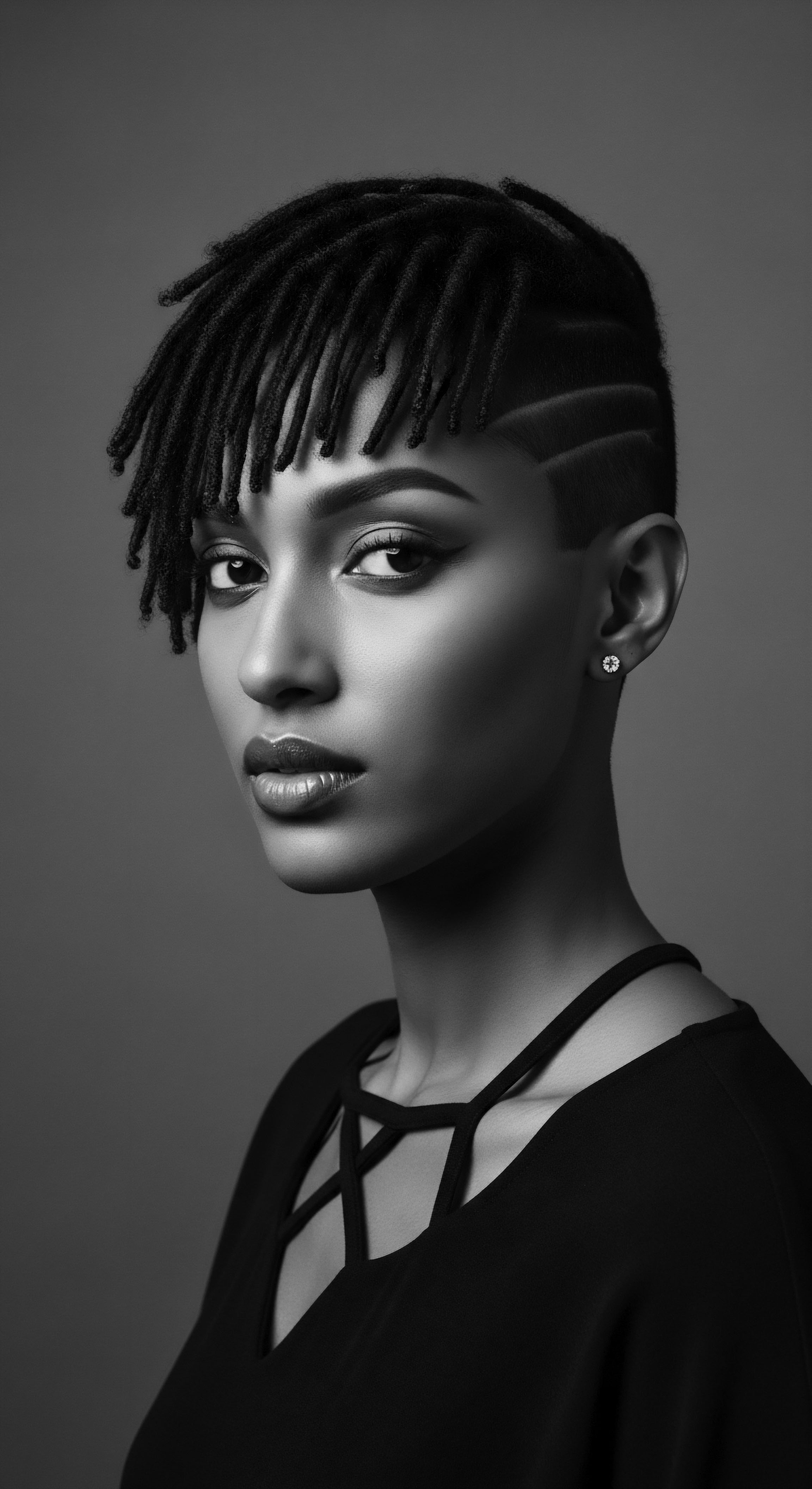
Comparing Materials ❉ Cotton Vs. Silk/Satin for Nocturnal Hair Preservation
The material of one’s sleeping surface or hair covering plays a decisive role in mitigating or exacerbating Sleep Damage. Traditional bedding often consists of cotton, a natural fiber widely appreciated for its breathability and comfort during waking hours. However, its microscopic structure, characterized by short, rough fibers, creates a surface that readily snags and pulls at delicate hair strands, especially those with intricate curl patterns. This mechanical agitation leads to heightened friction, which in turn causes the hair’s outer cuticle to become ruffled, lifted, and even stripped away.
When the cuticle is compromised, the hair’s inner cortex is exposed, accelerating moisture loss and making the strand vulnerable to breakage. Furthermore, cotton is inherently hydrophilic, meaning it readily absorbs water. This property, while beneficial for towels, is detrimental for hair, as cotton pillowcases act as sponges, wicking away the natural oils and conditioners that are vital for maintaining the hydration and elasticity of textured hair. Waking with parched, tangled, and frizzy hair is a direct consequence of this absorptive and abrasive interaction.
In opposition to cotton, silk and satin emerge as superior choices for nocturnal hair preservation, a distinction recognized through centuries of practical application. Silk, a natural protein fiber produced by silkworms, boasts an exceptionally smooth surface due to its long, continuous filaments. This inherent smoothness translates into minimal friction when hair glides across it, thereby preventing the agitation and lifting of the hair cuticle. Consequently, hair experiences less mechanical stress, reducing tangles, frizz, and breakage.
Additionally, silk is far less absorbent than cotton, allowing hair to retain its natural moisture and applied products overnight. This moisture-retaining property is invaluable for textured hair, which requires consistent hydration to maintain its health and definition. Satin, while often a synthetic weave (though some natural satins exist), mimics silk’s smooth texture, offering similar benefits in terms of reduced friction and moisture preservation, often at a more accessible price point.
- Moisture Retention ❉ Silk and satin fabrics significantly reduce moisture absorption from hair, helping strands remain hydrated throughout the night, crucial for preventing dryness and brittleness.
- Reduced Friction ❉ The smooth surface of silk and satin minimizes mechanical abrasion on the hair cuticle, thereby reducing frizz, tangles, and breakage often associated with coarser materials like cotton.
- Hairstyle Preservation ❉ By allowing hair to glide freely without snagging or compression, these materials aid in maintaining the integrity and definition of protective styles, extending their lifespan and reducing the need for daily restyling.
The purposeful transition to silk or satin bonnets, scarves, and pillowcases within contemporary textured hair care is not merely a trend; it represents a modern articulation of ancestral knowledge. This shift acknowledges that the nightly environment fundamentally influences hair health. The academic scrutiny of Sleep Damage, therefore, extends beyond the immediate effects to consider the long-term consequences of consistent nocturnal aggression.
Chronic friction and moisture depletion can contribute to issues such as thinning edges, reduced hair density, and a compromised growth cycle. By integrating scientific understanding with the enduring wisdom of heritage practices, we gain a comprehensive appreciation for the meaning of Sleep Damage and the imperative of its mitigation for vibrant, resilient textured hair.
Consider the profound continuity of this protective impulse. From the intricate headrests carved in various African societies, designed to elevate and preserve complex coiffures during slumber for weeks or even months (as noted in historical accounts of central, western, and southern African cultures, and even ancient Egypt and Japan), to the widespread adoption of silk-lined bonnets in modern diasporic communities, the intention remains steadfast ❉ to shield and honor the hair during its most vulnerable state. These historical artifacts and enduring practices speak volumes about humanity’s enduring respect for hair as an extension of self and identity.
The wooden headrests, often carved by their owners or by skilled artisans, served not only a utilitarian purpose but also held symbolic significance, sometimes functioning as conduits to ancestors or indicators of status. Their very existence underscores a profound understanding that hair, particularly when elaborately styled, required dedicated protection even during unconscious hours, anticipating the challenges of Sleep Damage long before the phrase was coined.
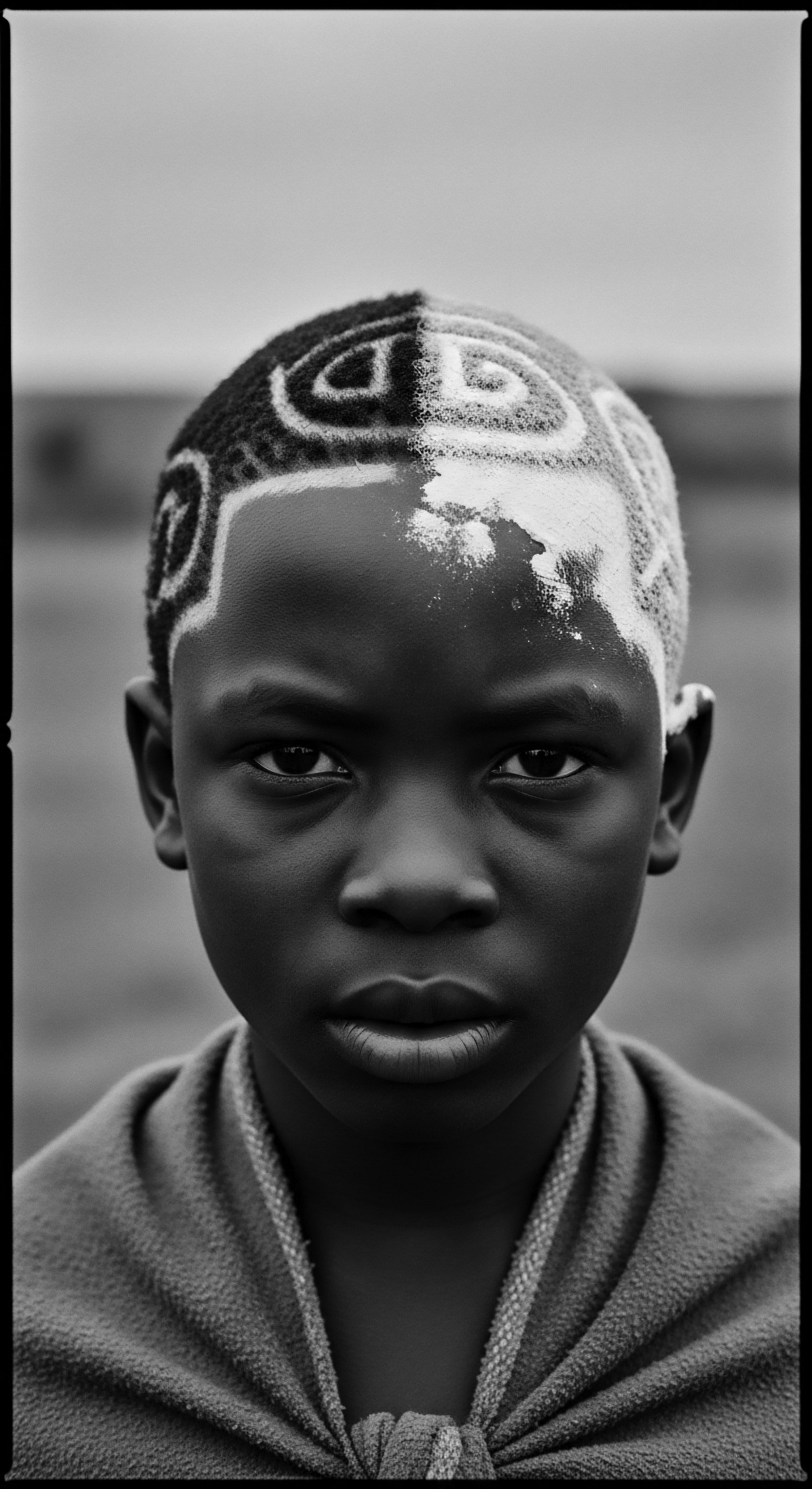
Reflection on the Heritage of Sleep Damage
As we close this meditation on Sleep Damage, a deeper truth unfurls ❉ the concept extends beyond simple physical harm to the hair; it echoes a continuous thread of resilience and ingenuity woven through the heritage of textured hair. The nightly ritual of protecting one’s hair, whether through ancestral headwraps, meticulously arranged braids, or the embrace of contemporary silk coverings, is not merely a regimen of care. It is an act of communion with a living legacy, a silent acknowledgment of the countless generations who understood the intimate connection between hair, identity, and survival. Each coil and curl holds within it the whispers of journeys, celebrations, and steadfast strength.
The wisdom passed down, often through visual cues and embodied practices rather than written texts, provided pragmatic solutions to the challenges of environmental and mechanical stressors that we now categorize as Sleep Damage. This inherent understanding speaks to a profound attunement to the body and its needs, a holistic approach to wellness where hair is recognized as a vital aspect of self.
The experience of Sleep Damage, in its historical context for Black and mixed-race hair, was often amplified by conditions of systemic hardship. The resourcefulness employed to counteract these nightly assaults on hair integrity—from crafting bonnets out of humble scraps to maintaining elaborate styles for extended periods—highlights a deep, enduring respect for hair as a cultural artifact and personal expression. It is a testament to the power of adaptation, transforming oppressive circumstances into opportunities for creative solutions. The very act of covering one’s hair at night became a quiet rebellion, a subtle assertion of autonomy and self-worth in environments that sought to strip both.
This historical resonance infuses our modern practices with a richness and purpose that transcend mere cosmetic concern. The continuous pursuit of protective measures against Sleep Damage, therefore, aligns us with a lineage of caretakers who, against all odds, preserved the vitality and cultural significance of textured hair. It reminds us that caring for our hair today is not just about individual beauty; it is about honoring a collective past and nurturing a vibrant future for the unbound helix of our heritage.
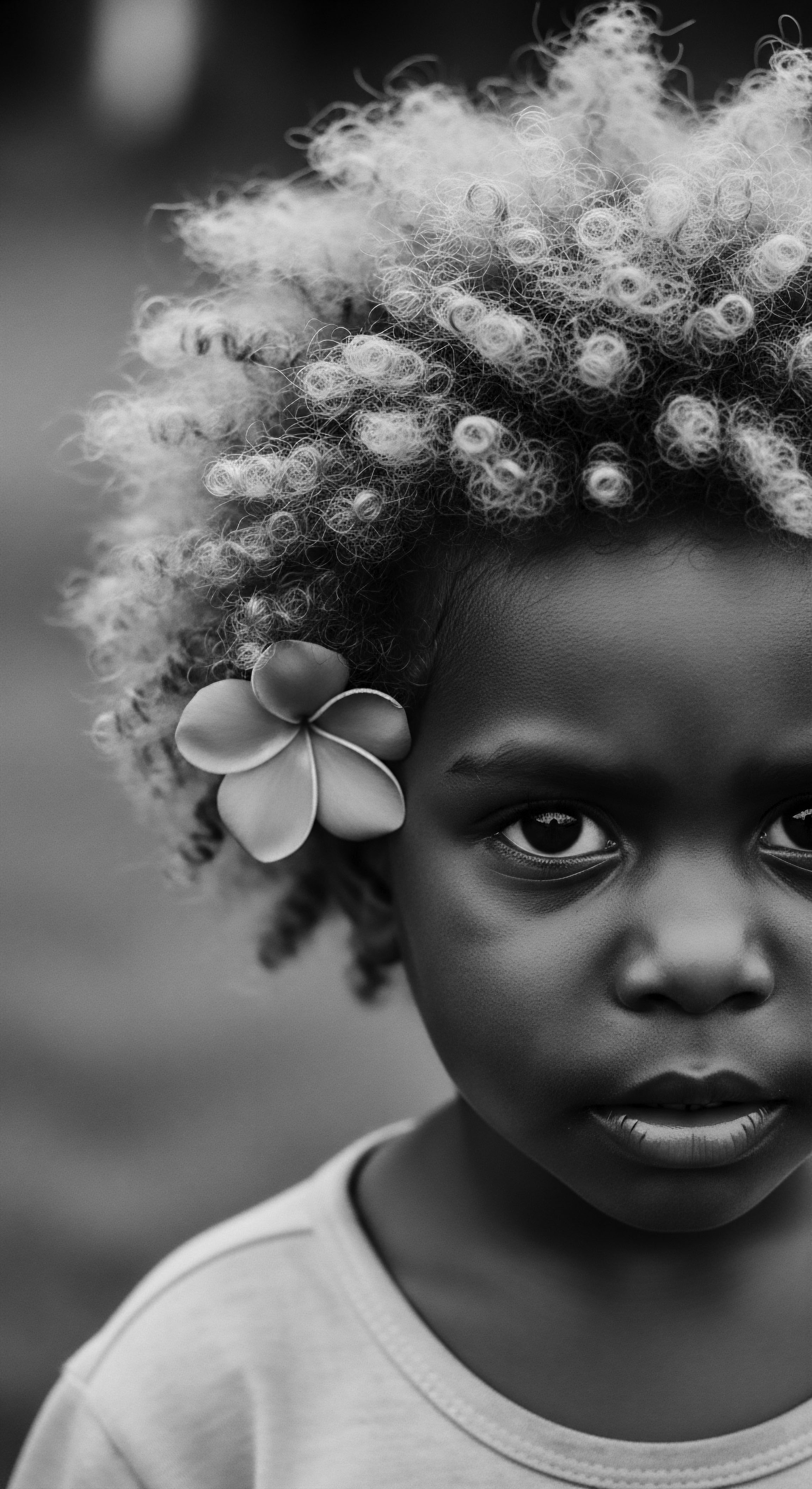
References
- Byrd, Ayana D. and Lori L. Tharps. Hair Story ❉ Untangling the Roots of Black Hair in America. St. Martin’s Press, 2001.
- Walker, K. “African American Hair ❉ An Exploration of Sociocultural and Historical Meanings.” Journal of Black Studies, vol. 31, no. 6, 2001, pp. 666-681.
- Opoku, R. The African Hair Revolution ❉ An Anthropological Study of Hair as Culture. Routledge, 2014.
